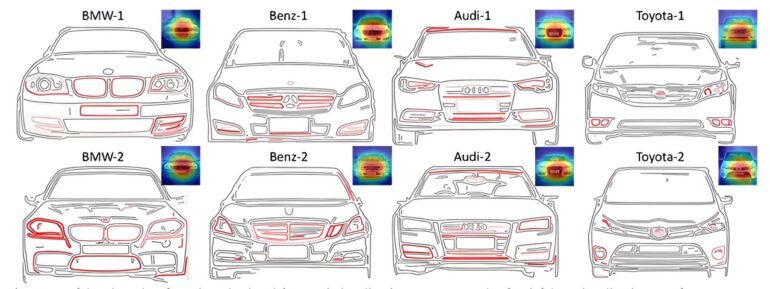TL;DR:
- Carnegie Mellon University introduces BIGNet, an AI-driven deep learning model.
- BIGNet identifies visual brand-related features in product design using SVG images.
- Achieves 100% accuracy in differentiating between popular cell phone brands.
- Successfully identifies luxury automotive brands with superior brand consistency.
- Promises to save significant time for domain experts and designers.
- Researchers aim to extend BIGNet’s capabilities to 3D imaging and beyond.
Main AI News:
In the realm of product design, the pivotal role of brand consistency cannot be overstated. It serves as the cornerstone of success across various product lines, anchoring brands’ core essence and fostering profitability. For companies that annually unveil the latest generation of their products, the challenge lies in creating designs that not only stand out from the competition but also encapsulate the very essence of their brand.
Enter Carnegie Mellon University’s trailblazing innovation: a fully automated deep learning architecture known as BIGNet, short for Brand Identification Graph Neural Network. This groundbreaking model is meticulously trained using SVG images of products, setting a new standard for automating the identification of visual brand-related features.
BIGNet operates by meticulously scrutinizing thousands of curves within product images, meticulously identifying the visual cues that define a brand’s identity. This groundbreaking work is now published in the esteemed Journal of Mechanical Design, marking a turning point in the world of product design.
Yu-hsuan “Sean” Chen, a Ph.D. candidate in mechanical engineering, elucidates, “Before the advent of BIGNet, there was no automated method to harness style-related features through machine learning. Designers often relied on unspoken rules in their minds, which were challenging to articulate and even harder to transfer across diverse product lines.”
To put BIGNet to the test, the research team conducted experiments across an array of products, including iconic cell phone brands like Apple and Samsung. Astonishingly, the model achieved a flawless 100% accuracy rate in distinguishing between the two brands. It adeptly identified specific features such as screen gaps and camera lens placement, unequivocally differentiating one brand from the other.
To underscore BIGNet’s adaptability and versatility, the team expanded their assessment to encompass ten automotive brands. Remarkably, the model excelled in identifying brands such as Audi, BMW, and Mercedes Benz, showcasing the consistency that luxury automakers maintain in their brand identity, even across diverse product ranges.
Yu-hsuan Chen emphasizes the transformative impact of this technology, stating, “This innovation will significantly reduce the reliance on domain experts who have spent decades deciphering a brand’s essence. Companies will no longer need individuals with 20+ years of experience to comprehend their brand identity.”
As of now, BIGNet operates primarily with 2-dimensional straight-on images, but researchers are eagerly looking to extend their investigations to 3D imaging. They envision a future where this model transcends brand identity to uncover finer details, distinguishing between a “muscle” car and a “sporty” one.
Jon Cagan, the lead author and head of the Department of Mechanical Engineering, who has dedicated nearly three decades to formalizing brands through design languages, is optimistic about BIGNet’s potential. He envisions manifold applications and opportunities for this innovative advancement in the world of machine learning and brand exploration.
Conclusion:
The introduction of BIGNet marks a pivotal moment in the world of product design, offering an automated and highly accurate method for identifying visual brand-related features. This innovation will significantly streamline design processes, reduce the reliance on long-term domain experts, and open up possibilities for broader applications in the market, ultimately leading to more consistent and distinctive brand identities in products across industries.

